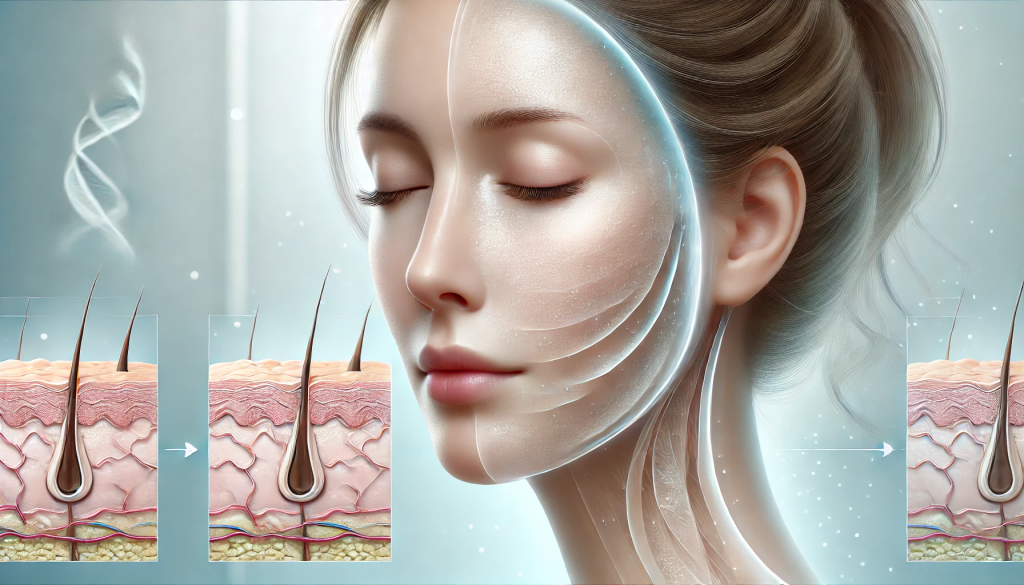Abstract: Skin cycling, a term gaining traction in dermatological circles, refers to the skin’s natural process of shedding and regeneration. Understanding this cycle is pivotal for developing effective skincare regimens and therapeutic interventions. This paper delves into the intricacies of skin cycling, examining its phases, regulatory mechanisms, and the impact of various factors such as aging, environmental exposures, and dermatological conditions. Insights from leading dermatologists are integrated to provide a comprehensive perspective on optimizing skin health.
Introduction

The human skin, as the body’s largest organ, serves as a dynamic barrier, continually renewing itself to maintain structural integrity and function. This renewal process, termed skin cycling, encompasses a series of orchestrated events involving cell proliferation, differentiation, and desquamation. A profound understanding of skin cycling is essential for clinicians and researchers aiming to address various dermatological conditions and enhance skin health.
1. Phases of Skin Cycling
Skin cycling comprises several distinct phases:
1.1. Keratinocyte Proliferation
Originating in the basal layer of the epidermis, keratinocytes undergo mitosis, producing new cells that migrate upwards. This proliferation is tightly regulated to balance cell loss from the surface, ensuring epidermal thickness remains constant (Lavker & Sun, 1982).Google Scholar+1Google Scholar+1
1.2. Differentiation and Stratification
As keratinocytes ascend through the epidermal layers, they undergo differentiation, forming the spinous and granular layers. During this process, cells synthesize keratins and lipids essential for barrier function (Huelsken et al., 2001).
1.3. Desquamation
The final stage involves the shedding of corneocytes from the stratum corneum. This desquamation is a controlled process, crucial for removing aged cells and pathogens, thereby maintaining skin homeostasis (Candi et al., 2005).
2. Regulatory Mechanisms
Several factors intricately regulate skin cycling:
2.1. Genetic Factors
Genes such as β-catenin play pivotal roles in hair follicle morphogenesis and stem cell differentiation, influencing the overall skin renewal process (Huelsken et al., 2001).Google Scholar
2.2. Signaling Pathways
Pathways like Wnt and Notch are instrumental in regulating keratinocyte proliferation and differentiation. Dysregulation of these pathways can lead to disorders like psoriasis and cancer (Ratushny et al., 2012).Google Scholar+7Google Scholar+7Google Scholar+7Google Scholar
2.3. Stem Cell Niches
Epidermal stem cells, residing in niches such as the bulge area of hair follicles, are crucial for regeneration. Their activity ensures continuous replenishment of keratinocytes (Cotsarelis et al., 1990).Google Scholar+1Google Scholar+1
3. Factors Influencing Skin Cycling
Various intrinsic and extrinsic factors modulate skin cycling:
3.1. Aging
Aging leads to a decline in keratinocyte proliferation and a slower desquamation rate, resulting in a dull complexion and increased susceptibility to injury (Lavker, 1979).Google Scholar
3.2. Environmental Exposures
Ultraviolet (UV) radiation accelerates skin aging (photoaging) and can disrupt normal cycling, leading to conditions like actinic keratosis (Wlaschek et al., 2001).
3.3. Dermatological Conditions
Diseases such as psoriasis involve hyperproliferation of keratinocytes, while conditions like eczema are characterized by impaired barrier function, both affecting normal skin cycling (Nestle et al., 2009).
4. Dermatologists’ Perspectives on Optimizing Skin Cycling
Leading dermatologists emphasize strategies to maintain and enhance skin cycling:
4.1. Topical Retinoids
Retinoids, derivatives of vitamin A, are renowned for their ability to promote keratinocyte turnover and improve differentiation, thereby enhancing skin texture and reducing signs of aging (Mukherjee et al., 2006).
4.2. Chemical Exfoliation
Agents like alpha-hydroxy acids (AHAs) facilitate desquamation by weakening corneocyte cohesion, promoting a smoother complexion (Kornhauser et al., 2010).
4.3. Moisturization
Maintaining hydration is vital for enzymatic processes involved in desquamation. Emollients and humectants support barrier function and prevent transepidermal water loss (Rawlings & Harding, 2004).
4.4. Sun Protection
Consistent use of broad-spectrum sunscreens protects against UV-induced damage, preserving normal skin cycling and preventing photoaging (Gilchrest & Krutmann, 2006).
5. Conclusion
Understanding the complexities of skin cycling is fundamental for developing effective skincare strategies and treatments. By considering the phases, regulatory mechanisms, and influencing factors, dermatologists can tailor interventions to maintain skin health and address various dermatological conditions.
References
- Candi, E., Schmidt, R., & Melino, G. (2005). The cornified envelope: a model of cell death in the skin. Nature Reviews Molecular Cell Biology, 6(4), 328-340.
- Cotsarelis, G., Sun, T. T., & Lavker, R. M. (1990). Label-retaining cells reside in the bulge area of pilosebaceous unit: implications for follicular stem cells, hair cycle, and skin carcinogenesis. Cell, 61(7), 1329-1337.Google Scholar+1Google Scholar+1
- Gilchrest, B. A., & Krutmann, J. (2006). Skin Aging. Springer.
